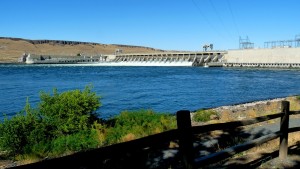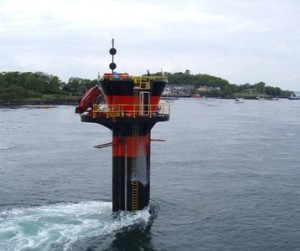So, you have thought about powering your home off the grid? Living off the grid might be right for you, but you will need a renewable source of energy. Consider all possible options you have and choose the right method or combination of methods for worry free “off the grid” living.
There are many possible ways to generate electricity from renewable sources such as wind, water, air, waves or the sun – which are inexhaustible – that don’t pollute the air like fossil fuels do. While there are upfront costs involved, there will be no more paying electric bills. If you are thinking about living off the grid, you may consider one of these sources, or a combination of these sources, to power your house to live comfortably off the grid.
So what options are you going to choose? We will describe some of the most popular methods available today to generate your own electricity.
5 Most popular off the grid power generation systems
Are you ready to plug into some renewable power sources? You have very good reason to consider some of these methods. They are environmentally safe, don’t produce carbon dioxide like fossil fuels do and you will be saving money on your electric bills. There are also the Residential Renewable Energy Tax Credit and other benefits available from state and federal governments to help you power your house from renewable sources of energy. Below are the five most popular ways you can power your home off the grid.
1. Solar power
 Sun is the most abundant source of energy for us, and it’s also one of the fastest growing off the grid sources of energy. Photovoltaic solar panels are able to harness energy from the sun and convert it into electrical energy. Today, solar technology has improved so much that it has become one of the most popular and easy to use forms of energy. Due to recent improvements in manufacturing, it’s transportable, flexible, and easily installed – and there are even portable solar power systems that are ready to be plugged in.
Sun is the most abundant source of energy for us, and it’s also one of the fastest growing off the grid sources of energy. Photovoltaic solar panels are able to harness energy from the sun and convert it into electrical energy. Today, solar technology has improved so much that it has become one of the most popular and easy to use forms of energy. Due to recent improvements in manufacturing, it’s transportable, flexible, and easily installed – and there are even portable solar power systems that are ready to be plugged in.
If you live in an area where you get plenty of sunshine all year round, solar would be the way to go. However, the downside of solar panels is the cost. Installation cost of these panels, inverters, transformers and other accessories that you will need to power your house fully from solar power is still pretty high.
2. Wind power
Generating electricity from wind turbines is another good option. It converts kinetic energy from wind into electrical energy. It has the advantage of generating clean power, 24 hours a day, day or night, without having to depend on sunlight like solar panels. Depending on where you live, you could easily calculate the average wind speed in your area and the amount of electricity you will be able to produce. You can also calculate the size of your turbine based on your power consumption needs.
To Install wind turbines, you will need large areas of land and a steady flow of wind for power generation. Wind turbines have moving parts which need more attention, regular maintenance and repairs.
3. Hydropower
 You could also power your house using a source of running water, such as a spring or river, to produce hydroelectricity. This method will work for you if you live close to a source of running water. Micro hydroelectric power plants can be a most cost effective way of generating power for your home. These work in a similar way as a wind turbine works, but you are using water current instead of wind to turn the turbine. It can be a steady power source for you and it requires similar capital investment as the wind turbine or the solar panel systems.
You could also power your house using a source of running water, such as a spring or river, to produce hydroelectricity. This method will work for you if you live close to a source of running water. Micro hydroelectric power plants can be a most cost effective way of generating power for your home. These work in a similar way as a wind turbine works, but you are using water current instead of wind to turn the turbine. It can be a steady power source for you and it requires similar capital investment as the wind turbine or the solar panel systems.
4. Geothermal power
Using the heat from beneath the earth’s surface to power your home is one of the most efficient ways to extract renewable energy through natural processes. This can be done on any scale. On a small scale it could be used to provide heat for your house, whereas on a large scale it could produce electricity through a geothermal power plant. This is one of the more reliable, cost effective, and environmentally friendly sources of renewable energy, but some expert installation and initial costs are involved with it.
5. Tidal power

“SeaGen installed” by Fundy (Fundy) – Own work. Licensed under CC BY-SA 3.0 via Wikimedia Commons.
Power from the ocean tides and ocean currents can also be harnessed and converted to electrical energy by using similar devices as wind turbines. Although it’s not as commonly used as the other methods mentioned above, tidal power generation systems have great potential for future power generation. Producing energy from tides or waves is a more reliable and predictable way of producing energy and is more cost effective than solar or wind power generators, while it has the same installation cost as a windmill or solar panel. However, you do need to live near an ocean for this project to work.
Conclusion
Renewable energy sources are much more cost effective and viable today. It is becoming more necessary to power our houses using alternate sources of energy which are environmentally friendly to reduce the pressure on our national grid, which mostly uses fossil fuels to generate electricity.
Choosing which method of renewable energy will depend on the area that you live in and some very specific on-site conditions – such as availability of steady wind, sunlight, or a steady flowing stream – in order for them to work. Every system has its own advantages and disadvantages, so choose the method or combination of methods that’s most suited for your area.
Want to learn more? We can help. Click here to book a meeting with us.
We would appreciate your feedback so please put down your thoughts about this article on our Facebook page or in the comment box below.
Source: Environmental Professionals Network
Related articles and resources:
- Stop Paying Your Electric Bills – Build Your Own Power Generator | Environmental Professionals Network
- Residential Renewable Energy Tax Credit | Department of Energy
- Renewable Energy | State and Local | US EPA
- Get Off-the-grid & Power your Own Home & Business | Nourish The Planet
- Portable Solar Power Systems Shop Solar



